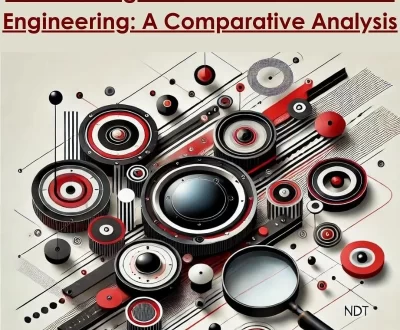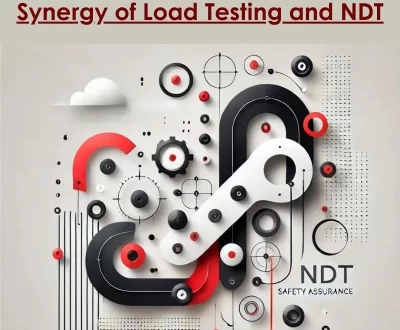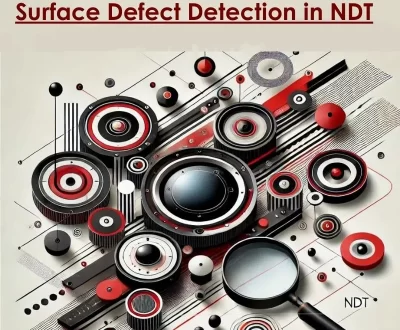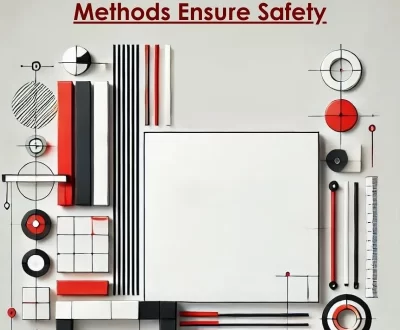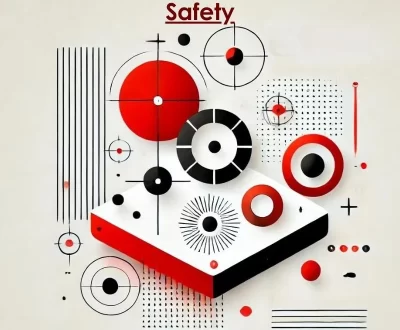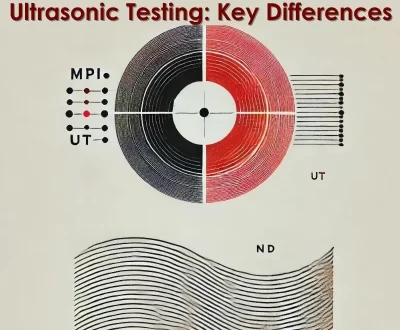Magnetic Particle Inspection (MPI) for Surface Flaw Detection
- October 4, 2024
- Uncategorized
Magnetic Particle Inspection (MPI) is a highly dependable and extensively utilized technique within the realm of non-destructive testing (NDT). This method is specifically aimed to detect surface and near-surface flaws in ferromagnetic materials such as iron, steel, and nickel.
MPI’s effectiveness in identifying cracks, seams, laps, and inclusions in critical components makes MPI an essential tool in industries such as aerospace, automotive, and manufacturing.
Basics of Magnetic Particle Inspection (MPI) and Surface Defect Detection
Magnetic Particle Inspection (MPI) works on the principle of magnetism. It detect surface and shallow subsurface defects in ferromagnetic materials. The process works by magnetizing the material, creating a magnetic field within it.
When a ferromagnetic material is magnetized, any discontinuities (such as cracks) in the material will disrupt the magnetic field. Magnetic particles applied to the surface accumulate around these areas, making defects visible to the naked eye.
MPI is widely used in industries that require strict material safety standards, such as aviation, automotive, and manufacturing. It is highly effective in detecting surface-level defects, offering fast, reliable results.
It’s a cost-effective and fast method, ideal for materials and components subjected to high stress, where surface defects could lead to catastrophic failures if left undetected.
Nevertheless, its ability to identify critical surface defects makes it an indispensable tool in quality control and safety inspections.
How Magnetic Particle Inspection MPI Testing Detects Surface and Subsurface Flaws
The core strength of MPI lies in its ability to detect surface and subsurface flaws that could compromise the integrity of ferromagnetic components. When a flaw like a crack or a void is present, the magnetic field becomes distorted, resulting in leakage flux.
Magnetic particles applied to the surface are drawn to these areas, or leakage field, causes magnetic particles applied to the surface to collect around the flaw, creating visible indications of the flaw’s size, shape, and location.
For surface defects, this accumulation of particles forms a clear visual indication of the flaw’s location, shape, and size. Inspectors can then evaluate the defect based on the visible markings.
Subsurface flaws, though more challenging to detect, can still be identified if they are close enough to the surface for the leakage flux to influence the particles. Other methods, such as ultrasonic testing, may be required for deeper inspections.
However, the deeper the flaw, the weaker the leakage flux, making detection more difficult. MPI is most effective for flaws within a shallow depth, ensuring it can detect potentially catastrophic imperfections before they cause failure.
The ability to detect both surface and shallow subsurface flaws gives MPI a distinct advantage in high-stress applications like weld inspections, automotive parts, and structural components.
Advantages and Limitations of MPI Testing in Non-Destructive Testing (NDT)
Magnetic Particle Inspection offers several advantages, making it one of the most commonly employed NDT methods:
Advantages of MPI Testing:
- High Sensitivity: MPI is particularly sensitive to small, surface-level defects.
- Cost-Effective: Low operational costs make it economical for regular inspections.
- Quick Results: Rapid and straightforward testing with minimal equipment.
- Portable: Portable, making it suitable for on-site inspections in remote locations.
- Effective for Complex Shapes: MPI can effectively inspect irregularly shaped components that may be difficult for other methods.
However, MPI is not without its limitations:
Limitations of MPI Testing:
- Limited to Ferromagnetic Materials: Limited to ferromagnetic materials, excluding non-magnetic metals like aluminum or copper.
- Depth of Detection: Depth of flaw detection is limited to the near surface.
- Surface Preparation: The test surface must be free of debris and contaminants for accurate results, requiring proper preparation.
- Residual Magnetism: After the inspection, the material may leave residual magnetism, necessitating demagnetization.
Conclusion
Magnetic Particle Inspection (MPI) plays a vital role in non-destructive testing, particularly for identifying surface and near-surface defects in ferromagnetic materials.
Its ability to reveal cracks, laps, and inclusions quickly and affordably makes it a popular choice across industries that rely on the integrity of metallic components.
However, despite its high sensitivity and fast results, MPI does have limitations, including its restriction to ferromagnetic materials and its reduced effectiveness in detecting deeper subsurface flaws.
Understanding these strengths and limitations is essential for ensuring the safety and longevity of critical components in engineering and manufacturing.
More from our blog
See all postsRecent Posts
- Load resistance evaluation in Software vs Structural Engineering October 6, 2024
- NDT Testing in Aerospace Industry: Ensuring Safety and Performance October 6, 2024
- Safety Assurance Through the Synergy of Load Testing and NDT October 6, 2024

